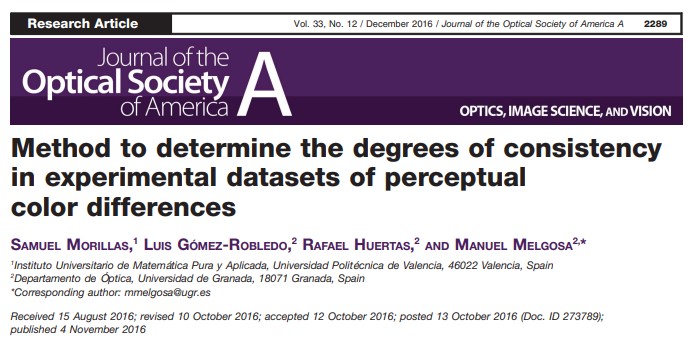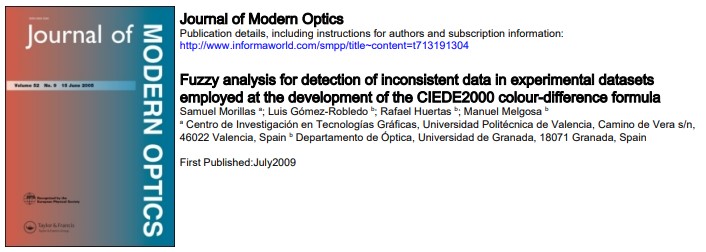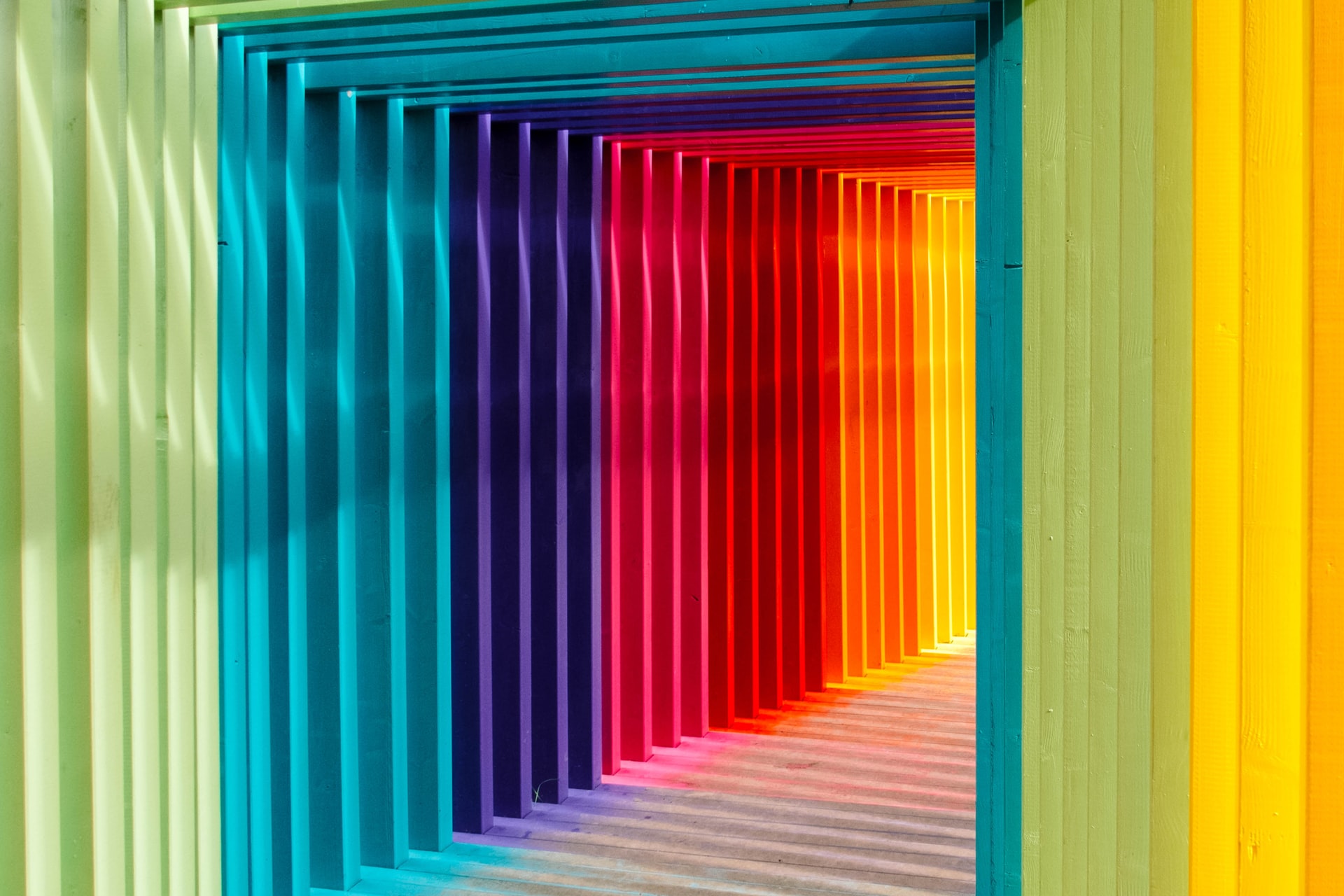The color difference formula used was CIEDE2000
In this post, we share the two articles published in which we explain the fuzzy method for the detection of inconsistent data in experimental datasets of perceptual color differences. The results have been obtained using the dataset employed to develop the current CIE/ISO color-difference formula, CIEDE2000
SAMUEL MORILLAS, LUIS GÓMEZ-ROBLEDO, RAFAEL HUERTAS, AND MANUEL MELGOSA
Method to determine the degrees of consistency in experimental datasets of perceptual color differences
Journal of the Optical Society of America A – JOSAA Vol. 33, Issue 12, pp. 2289-2296 (2016)
We propose a fuzzy method to analyze datasets of perceptual color differences with two main objectives: to detect inconsistencies between couples of color pairs and to assign a degree of consistency to each color pair in a dataset.
This method can be thought as the outcome of a previous one developed for a similar purpose [J. Mod. Opt. 56, 1447 (2009)], whose performance is compared with the proposed one. In this work, we present the results achieved using the dataset employed to develop the current CIE/ISO color-difference formula, CIEDE2000, but the method could be applied to any dataset. Specifically, in the mentioned dataset, we find that some couples of color pairs have contradictory information, which can interfere in the successful development of future color difference formulas as well as in checking the performance of current ones.

Fuzzy analysis for detection of inconsistent data in experimental datasets employed at the development of the CIEDE2000 colour-difference formula
Journal of Modern Optics – JMO, 56:13,1447 — 1456
Relating instrumental measurements to visually perceived colour-differences, under specific illuminating and viewing conditions, is one of the challenges of advanced colorimetry. Experimental data are used to devise new colour-difference formulas as well as to assess the performance of other colour-difference formulas. In this paper, we analyse the consistency of experimental data employed at the development of the last CIE recommended colour-difference formula, CIEDE2000.
Because of the subjective and imprecise nature of these data, we adopt a fuzzy approach, so that finally, for each experimental datum, we establish the fuzzy degree to which it can be considered consistent with the remaining data. The results of our analyses show that only a few data are associated with a rather low degree of consistency. These data in many cases correspond to colour pairs with a very small colour-difference for which visual assessments seem to be overestimated.



